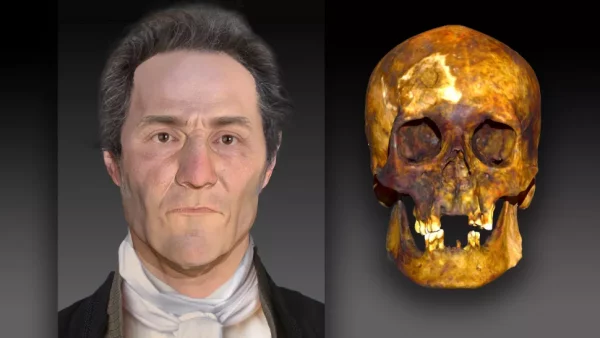In the late 18th century, a man was buried in Griswold, Connecticut, with his femur bones arranged in a criss-cross manner — a placement indicating that locals thought he was a vampire. However, little else was known about him. More than 200 years later, DNA evidence is revealing what he may have looked like. (And yes, he was genetically human.)
After performing DNA analyses, forensic scientists from a Virginia-based DNA technology company named Parabon NanoLabs, and the Armed Forces DNA Identification Laboratory (AFDIL), a branch of the U.S. Armed Forces Medical Examiner System based in Delaware, concluded that at the time of death, the deceased male (known as JB55) was about 55 years old and suffered from tuberculosis. Using 3D facial reconstruction software, a forensic artist determined that JB55 likely had fair skin, brown or hazel eyes, brown or black hair and some freckles, according to a statement.
Based on the positioning of the legs and skull in the grave, researchers suspect that at some point the body was disinterred and reburied, a practice often associated with the belief that someone was a vampire. Historically, some people once thought that those who died of tuberculosis were actually vampires, according to the statement.
“Writer Fuel” is a series of cool real-world stories that might inspire your little writer heart. Check out our Writer Fuel page on the LimFic blog for more inspiration.


